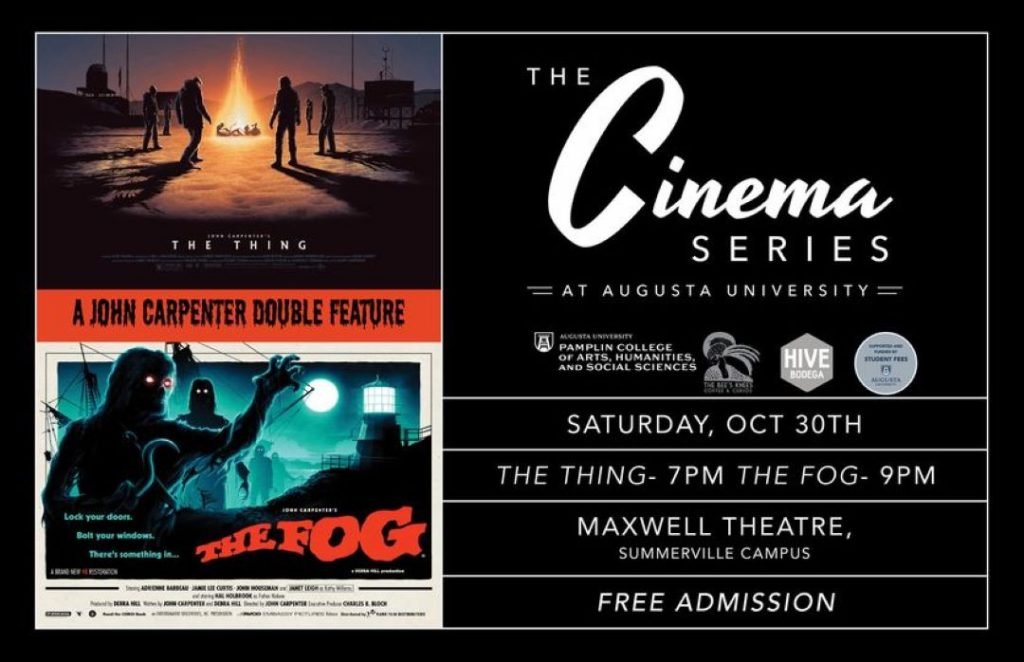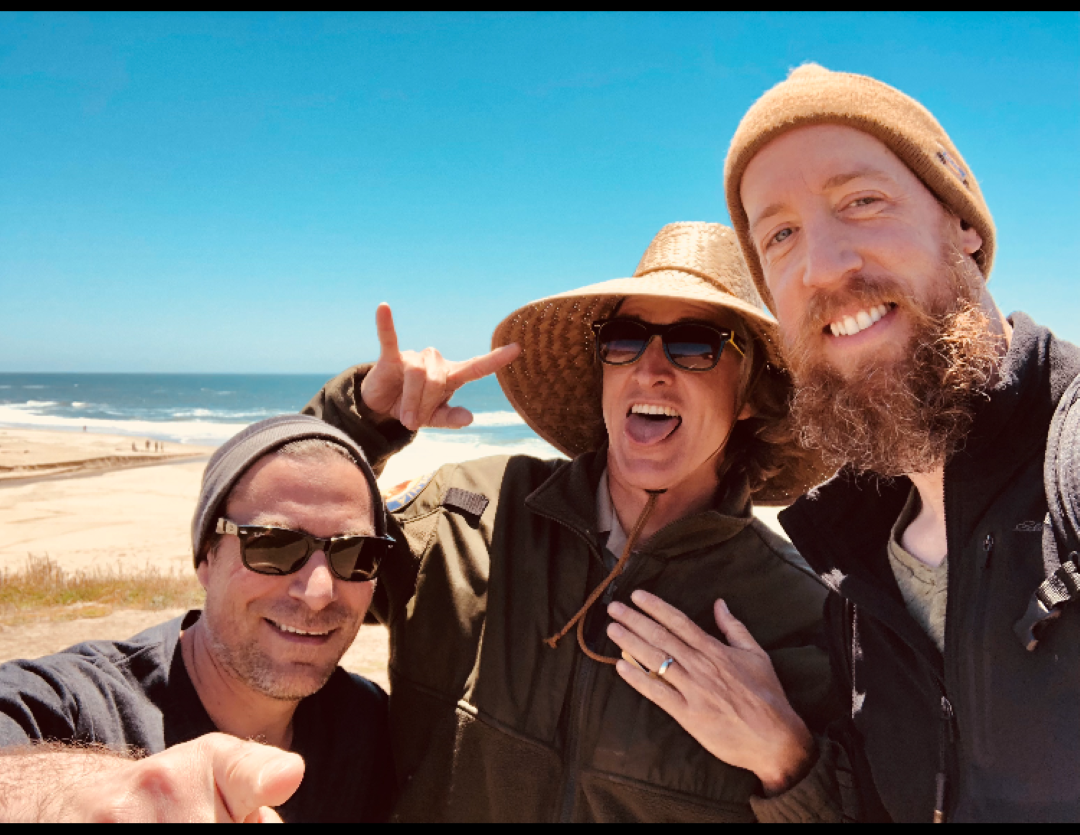What makes a great Halloween movie? It’s subject, I suppose, to some debate. Is it a memorable monster? A slasher with attitude? Is it a perfectly timed jump scare or just the right measure of undefined creepiness? It’s hard to say. But to be certain director John Carpenter, master of all things that go bump in the night, must be part of the discussion.
On Oct. 30, local movie maven and Augusta University Cinema Series programmer Matthew Buzzell will be screening two Carpenter classics – “The Fog” and “The Thing.” While some might argue that Carpenter’s “Halloween” should have been included, I’m happy to see the obvious choice excluded and, in fact, love the two chosen much more. You see, in the very finest scary movie tradition, both these movies are about much more than their central creeps – vengeful leper ghosts in “The Fog” and mysterious alien invaders in “The Thing.” Instead, “The Fog” becomes a meditation on guilt and “The Thing” paranoia and trust.

Much is often made – and rightfully so – of “The Thing.” It’s widely regarded as Carpenter’s masterpiece. Few films manage to ratchet up tension without release as well as this blood-soaked feature. People talk about the gore, but I often wonder if that is because they fear confessing to the unease that follows after the credits roll.
“The Fog” is a very different story. It’s a more traditional horror and, in truth, feels much more a product of its time. But it also features a Mount Rushmore of scream queens – Adrienne Barbeau, Janet Leigh and Jamie Lee Curtis – as well as a scenery chewing Hal Holbrook. It also manages to find the elusive bridge between slow burn creepiness and the jump scare slayings Carpenter built his reputation on. I find it to be a too-often-forgotten gem overshadowed by other Carpenter film. Both are worth checking out. “The Thing” screens at 7 p.m. and “The Fog” follows at 9 p.m. Admission is free.
Here are some other things that have caught my eye.
[adrotate banner=”54″]
Trolls of Amsterdam – “Wilson Drive:” A West Coast production featuring local talent Stephen Wilson, “Wilson Drive” is the good time music you hear behind the fence sending up barbecue smoke signals. It’s the easy droptop jams that pull up next to you during a snack-and-six packs stop at the convenience store. It’s late night funk just before last call and Sunday morning coming down. It, in many ways, seeks to fill the same space Sublime occupied in the mid-90s, although perhaps with fewer punk rock accelerants and a couple more Herbie Hancocks for the road.
It’s an interesting collection of songs in that it feels less about individual moments than the prolonged soundtrack it provides. There are few manufactured singalong moments. Instead, “Wilson Drive” builds on a more abstract foundation of mood, groove and attitude. No hits but no filler either. No hooks but deep and infectious jams that distract you from looking. It’s mood music that doesn’t ask much but, when you are least expecting it, provides exactly what you need. It is a really interesting release that feels very simple but is sophisticated in goals and execution. Nice work, Trolls.
“All the Marvels’” by Douglas Wolk: I’ve never been a comic book guy. I appreciate the form, but mostly from afar. For me, the 30-pages-and-out model of sequential storytelling always left me pining for resolution, an experience that lasted a little longer or, at very least, my $5 back.
[adrotate banner=”13″]
That said, I love the idea of building mythologies, of layering information, ideas and, most importantly, characters into a created world that becomes more complex with every issue. I just have never had the inclination to dive in.
But Douglas Wolk did. His new book – part memoir and part literary analysis – is based on his experience reading all 27,000+ Marvel superhero comics. That’s more than half a million pages of Biff, Pow and, for you Marvel fans out there, Snik. He calls it the longest continuous narrative of all time. That sounds like it could be true.
What’s remarkable about this book is not only the ever-evolving tale of heroes and villains it recounts, but the way this story reflects the culture it has become a part of. It’s as much about Spiderman as what Spiderman has come to represent. It’s also an interesting treatise on how we engage with storytelling. Because this prolonged tale has no real beginning or end and is prone to sidetracking, rewinding and occasionally calling a do-over, fans get on board with the program already in progress. Part of what is fascinating about Wolk’s book is his explanations of how that is the real strength behind the Marvel story. A great read for the comic fan and novice alike.
 Steven Uhles has worked as professional journalist in the Augusta area for 22 years, and his Pop Rocks column ran in The Augusta Chronicle for more than 20 years. He lives in Evans with his wife, two children and a dog named after Hunter Thompson. His Brand New Bag column runs the second and fourth Friday each month in The Augusta Press.
Steven Uhles has worked as professional journalist in the Augusta area for 22 years, and his Pop Rocks column ran in The Augusta Chronicle for more than 20 years. He lives in Evans with his wife, two children and a dog named after Hunter Thompson. His Brand New Bag column runs the second and fourth Friday each month in The Augusta Press.









